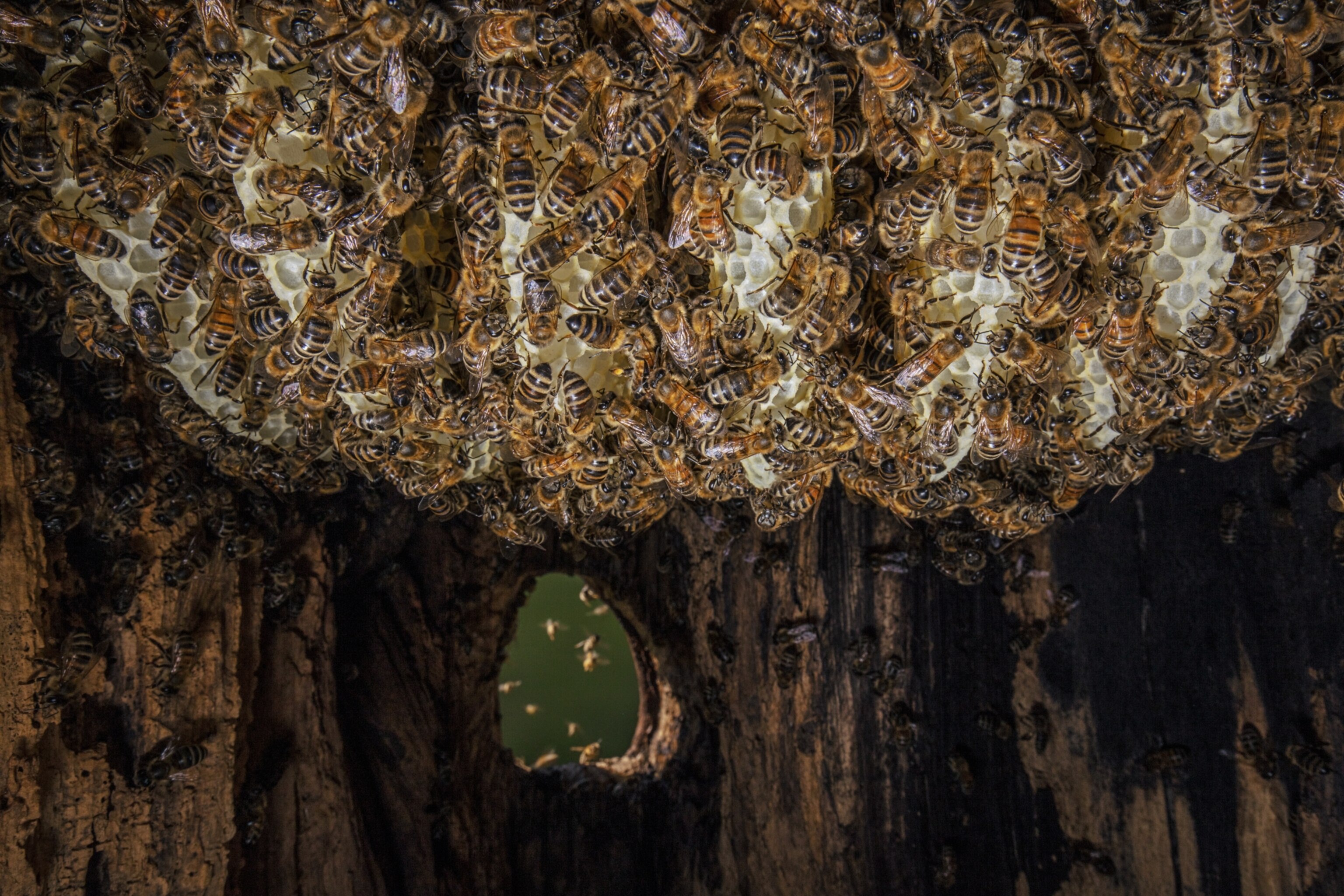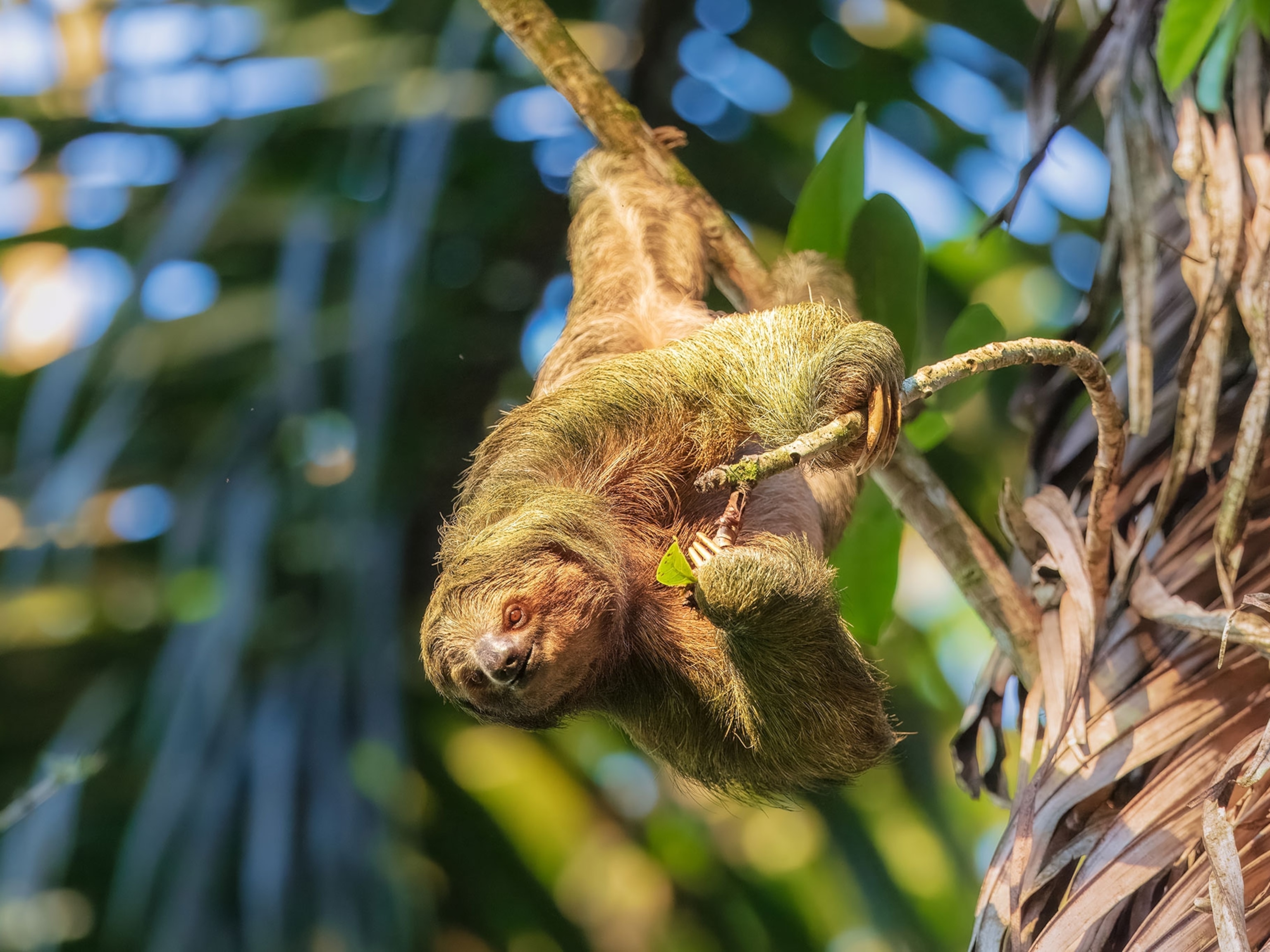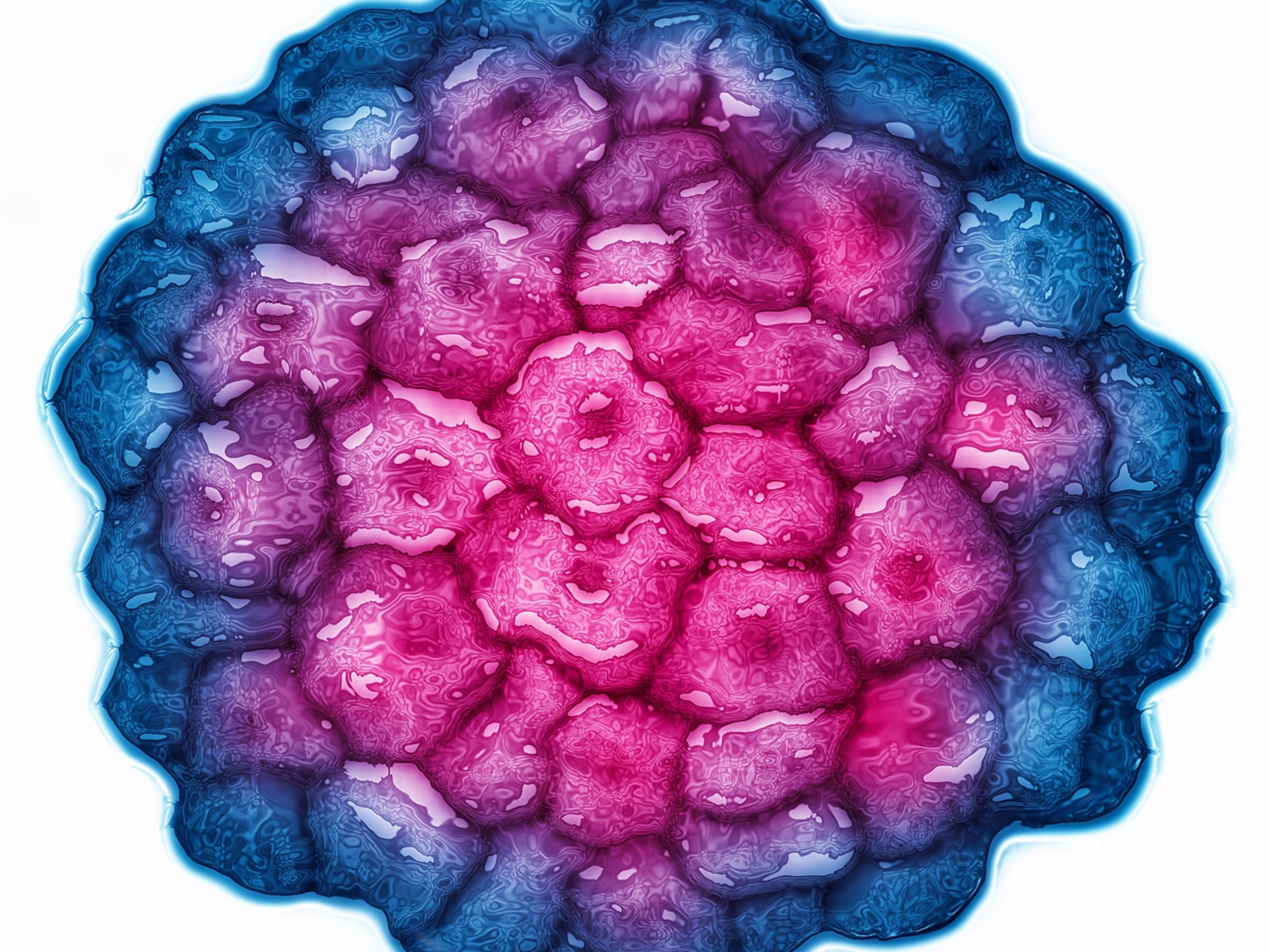What bacteria and fungi lurk in your city? Bees may have the answer.
DNA found in honeybee hives show that each city has a unique microbiome—and that could have big implications for human health.

Although we try not to think about it, our cities are teeming with trillions upon trillions of bacteria, fungi, and viruses. Knowing which ones are afoot can tell researchers a lot about the health of the plants, animals, and humans in the area, but collecting microorganisms on a city-wide scale is quite difficult and expensive.
Now, scientists have found a way to sample entire cities using honeybees. In a new study published March 30 in the journal Environmental Microbiome, scientists demonstrated how sampling the debris at the bottom of honeybee hives can provide scientists with a snapshot of the microbial landscape of urban environments.
(Biggest bacterium ever discovered shakes our view of the single-celled world)
In the paper, scientists analyzed DNA in debris from rooftop and backyard honeybee hives in New York City, Sydney, Melbourne, Venice, and Tokyo—and found that each location had a unique genetic signature. Some samples even contained a pathogen known to cause disease in humans.
Although more research is needed to know if honeybees can be used to effectively detect diseases in cities, the study’s authors say the handy little honey-producers have the potential to make city-wide microorganism monitoring much easier.
(Blood Falls – bacteria thrive for millions of years beneath a rusty Antarctic glacier)

Swapping swabs for swarms
“It's important to be able to characterize the microbiomes of the cities that we live in,” says
Elizabeth Hénaff, an assistant professor at NYU who studies how living beings interact with their environment. More than half of the world’s population live in cities, yet the microbial landscapes of these environments remain poorly understood. What scientists do know is that the microbial city slickers we interact with can greatly impact on their health.
In 2010, honeybees in Red Hook, Brooklyn raided a nearby maraschino cherry factory, producing bright-red syrup, which garnered a lot of press. This inspired Hénaff and her colleagues to launch a pilot study to examine what other substances New York’s honey bees were bringing back to their hives. It struck the researchers that this might be an easier way to sample microbes than swabbing for organisms on subway poles, sidewalks, and the like.
The scientists sampled honey, dead bees, and debris from three hives in New York City and found a diverse array of genetic data, most of which came from the hive debris. After that, the researchers collected hive debris from beekeepers in Australia, Italy, and Japan, each of which had its own local flair.

The hive debris from Venice was dominated by fungi commonly found in rotting wood, which is abundant in the waterlogged city. In Tokyo, samples of hive debris were loaded with Zygosaccharomyces rouxii, a strain of yeast used in soy sauce fermentation. Additionally, DNA from the pathogen Rickettsia felis, which causes a typhus-like febrile disease in humans—sometimes called cat’s scratch fever—was found in some of the samples from Tokyo.
They also uncovered some noteworthy bacteria inside the Brooklyn hives, including a species known to degrade polychlorinated biphenyls (PCBs), and another previously found in high-altitude Andean lakes that’s tolerant to extreme conditions.
Unsurprisingly, the researchers also found lots of microorganisms associated with bees during their study. They found microorganisms known to benefit bees as well as Paenibacillus larvae and Melissococcus plutonius, which are both bee pathogens that cause disease in bees. The authors say their findings indicate that sampling hive debris can not only provide insights into the health of the bees’ environment but also the bees themselves.
Flying Swiffers
Through their daily foraging, honeybees sample the soil, water, air, and everything in between, says Lewis Bartlett, a research scientist at the University of Georgia who studies honeybees and the infectious diseases that impact them.
“You can think of them as little flying Swiffer sheets,” Bartlett says. “Bees are covered in little hairs that collect pollen, but those hairs also catch particulates that exist in urban areas, such as pollutants, dander from animals and insects, that sort of thing. And then they go home and they dust themselves off so that they're nice and clean.”
While the pollen they collected gets put to good use, everything else ends up in a debris pile beneath the hive. (Learn more: Honeybees are accumulating airborne microplastics on their bodies.)
Sampling the debris created by honey bees in urban areas is “a really interesting way to go about sampling the environment,” says Bartlett. He believes the method has merit not just because honeybees are excellent samplers, but also because “beekeepers tend to be really enthusiastic about getting on board with scientific research.”
Bees for a better tomorrow
The community of microbes in an area depends on many things, such as the landscape and degree of development. “Urbanization represents one of the most transformational landscape processes across the globe,” says Christopher Schell, an urban ecologist at the University of Washington Tacoma, who wasn’t involved in the paper.
Understanding how the microbial landscape is altered by urbanization, he says, is important for all creatures—and for human health.
“There's a growing body of literature that shows that exposure to diverse microbiomes is a key component for positive health outcomes,” Hénaff says.
Being able to determine the diversity of the microbial communities of different neighborhoods “seems really important from a city planning perspective, specifically with respect to environmental justice,” she says.
While it remains to be seen if honeybees will one day help scientists detect diseases or city planners make cities more equitable, Hénaff’s study has demonstrated the insects’ immense promise as little scientific samplers.








